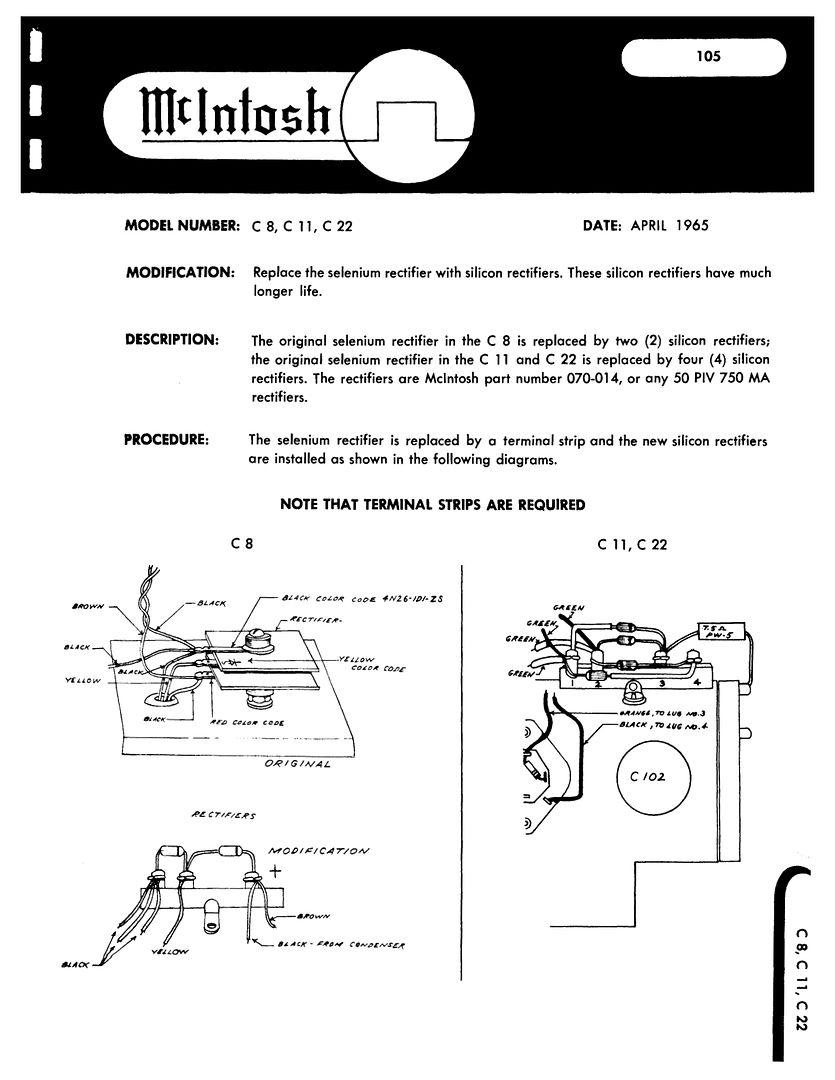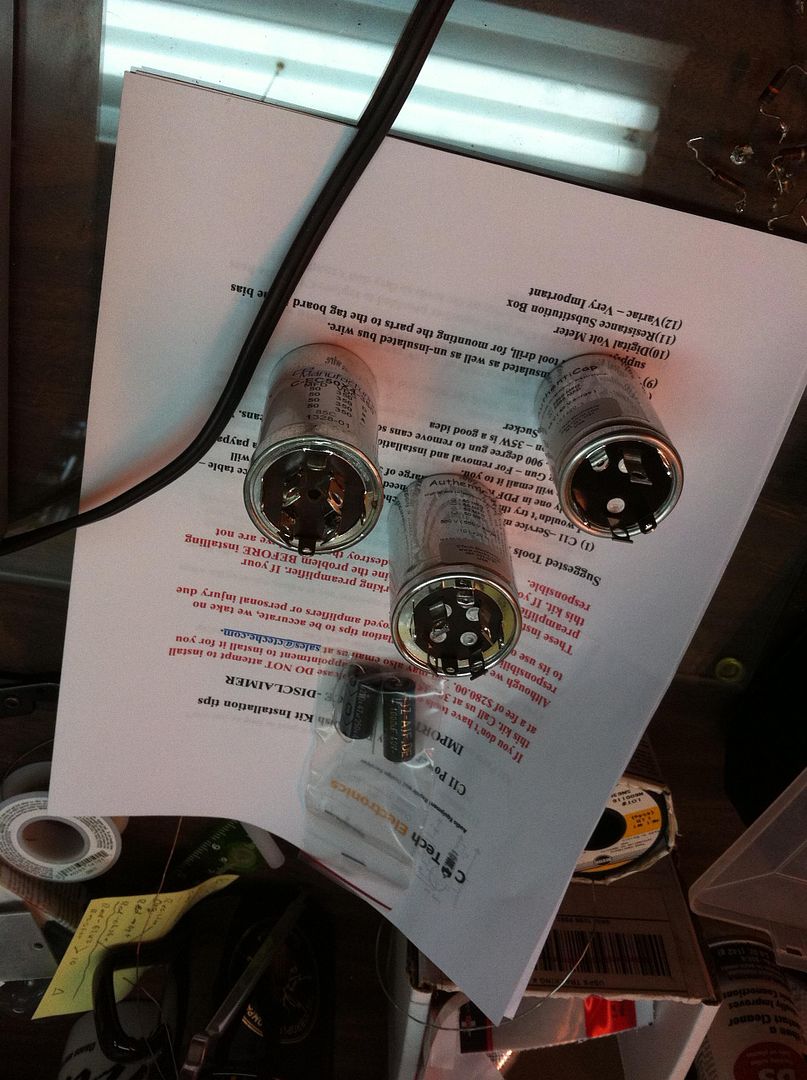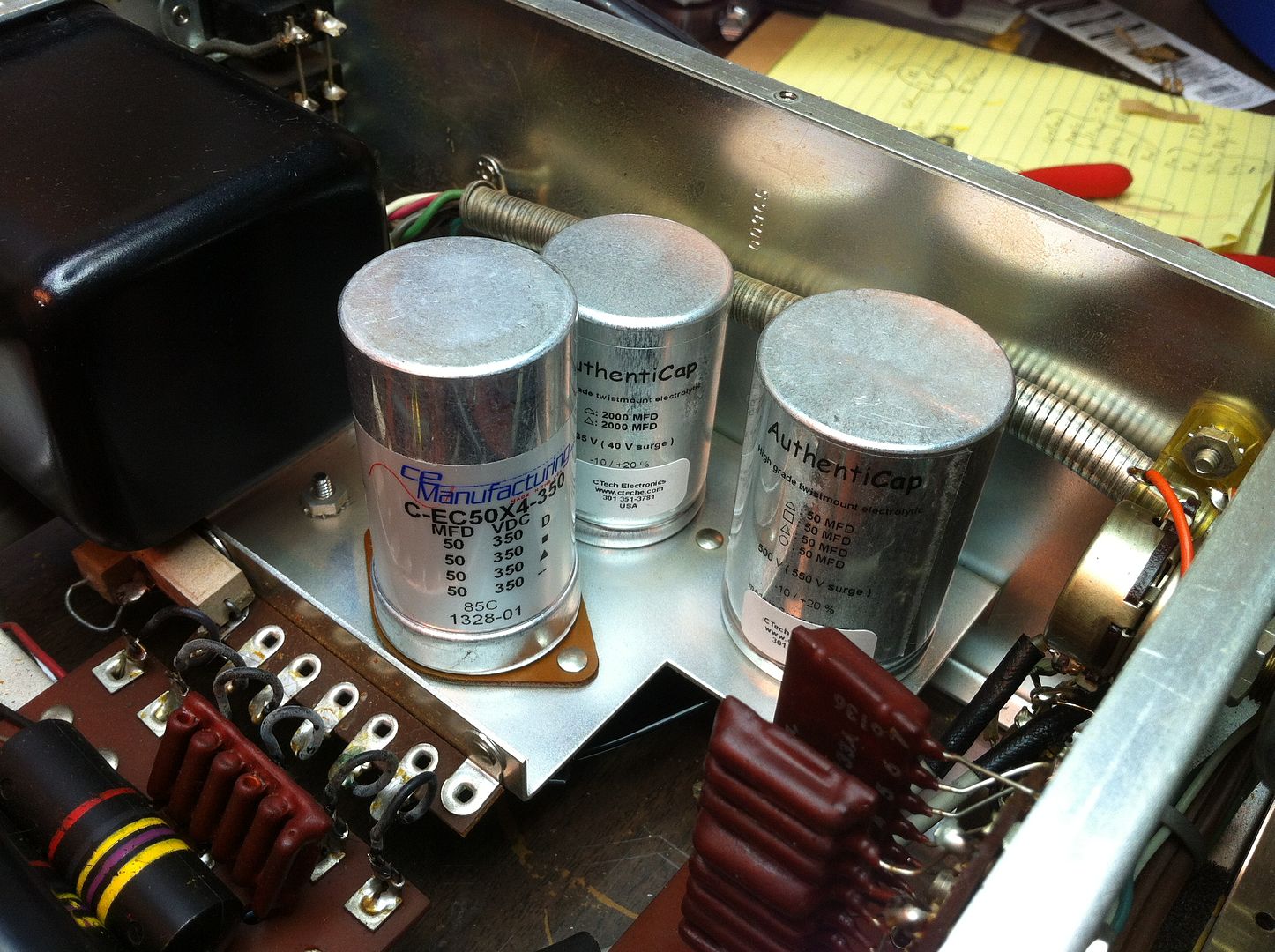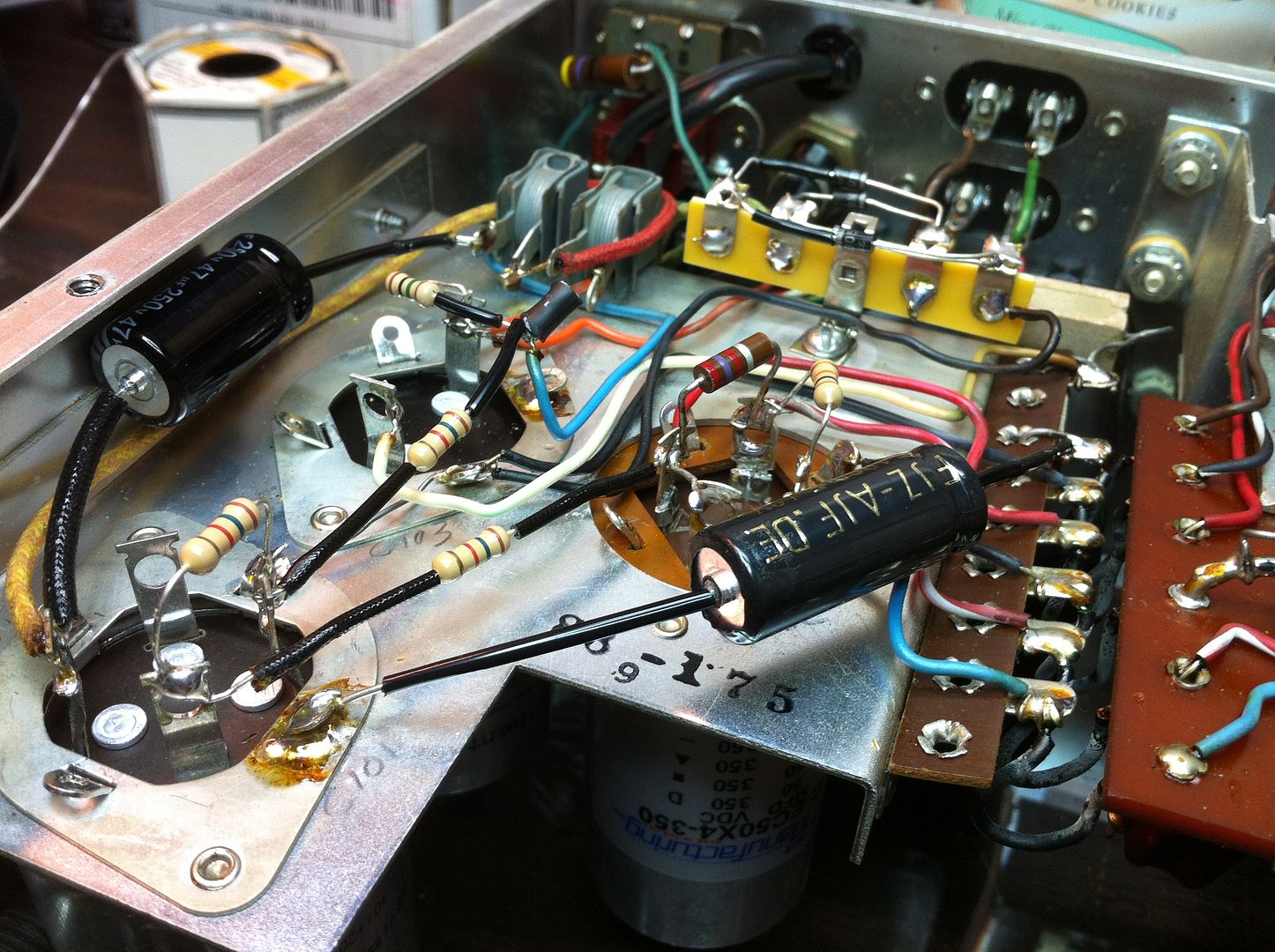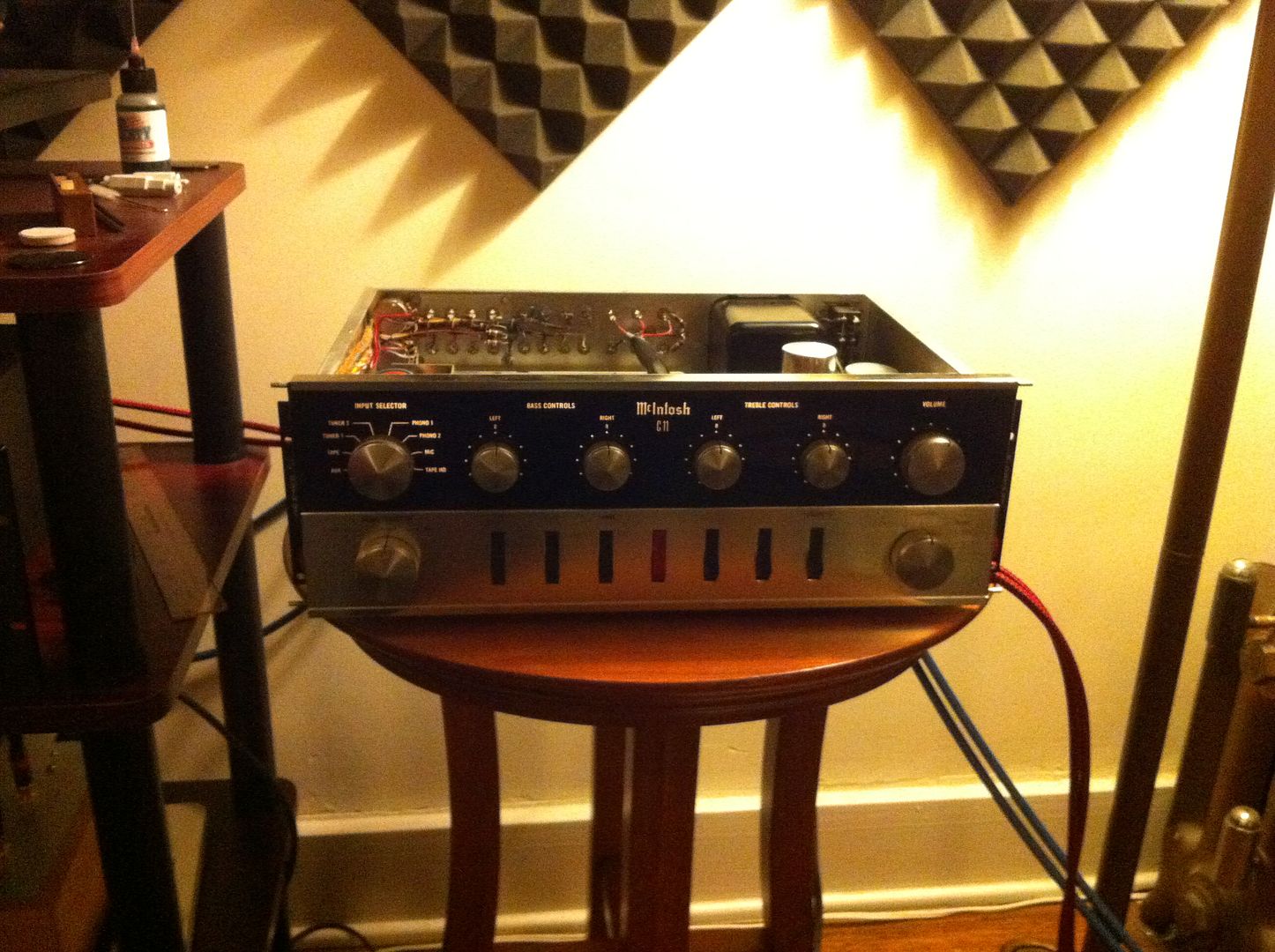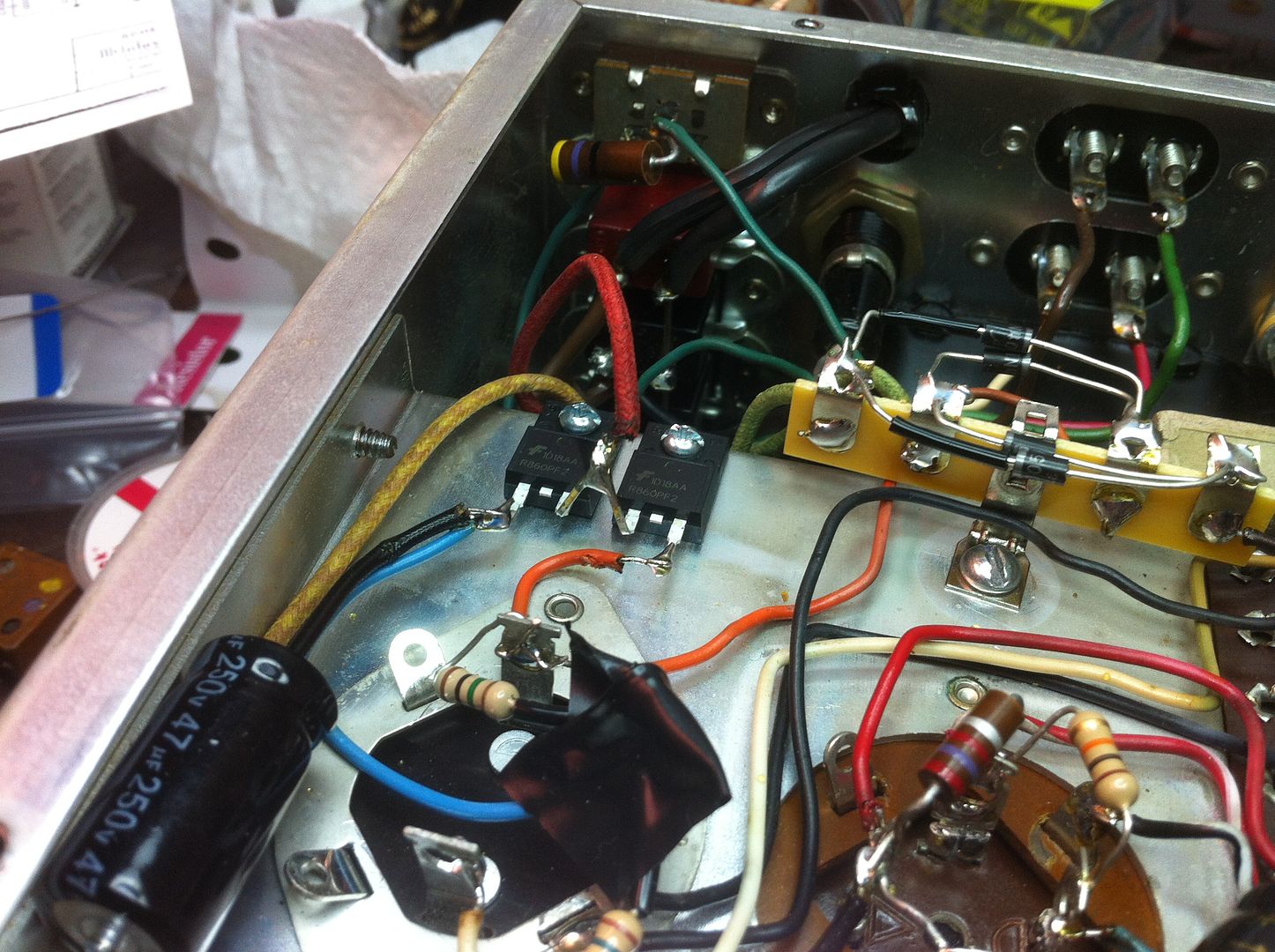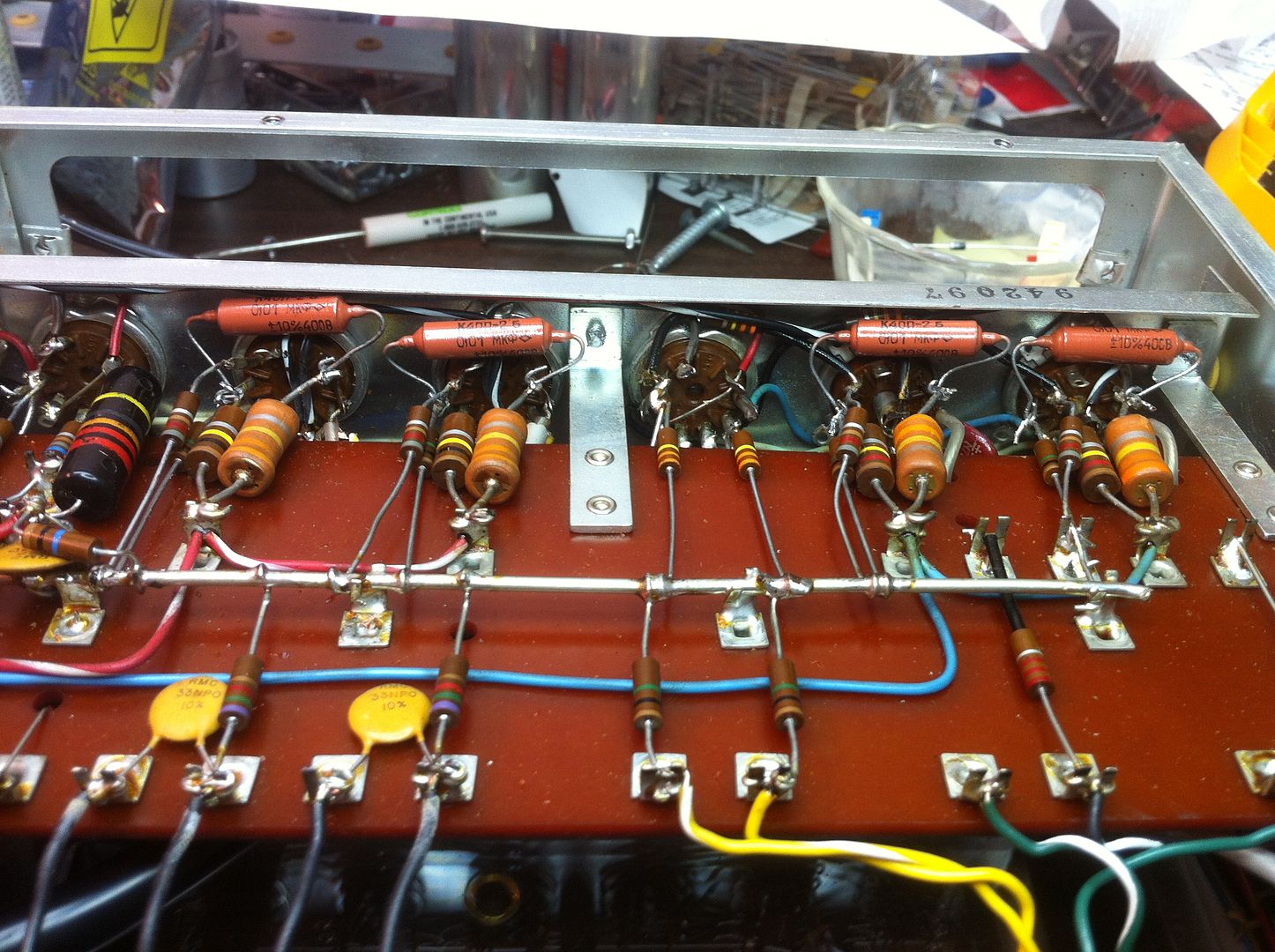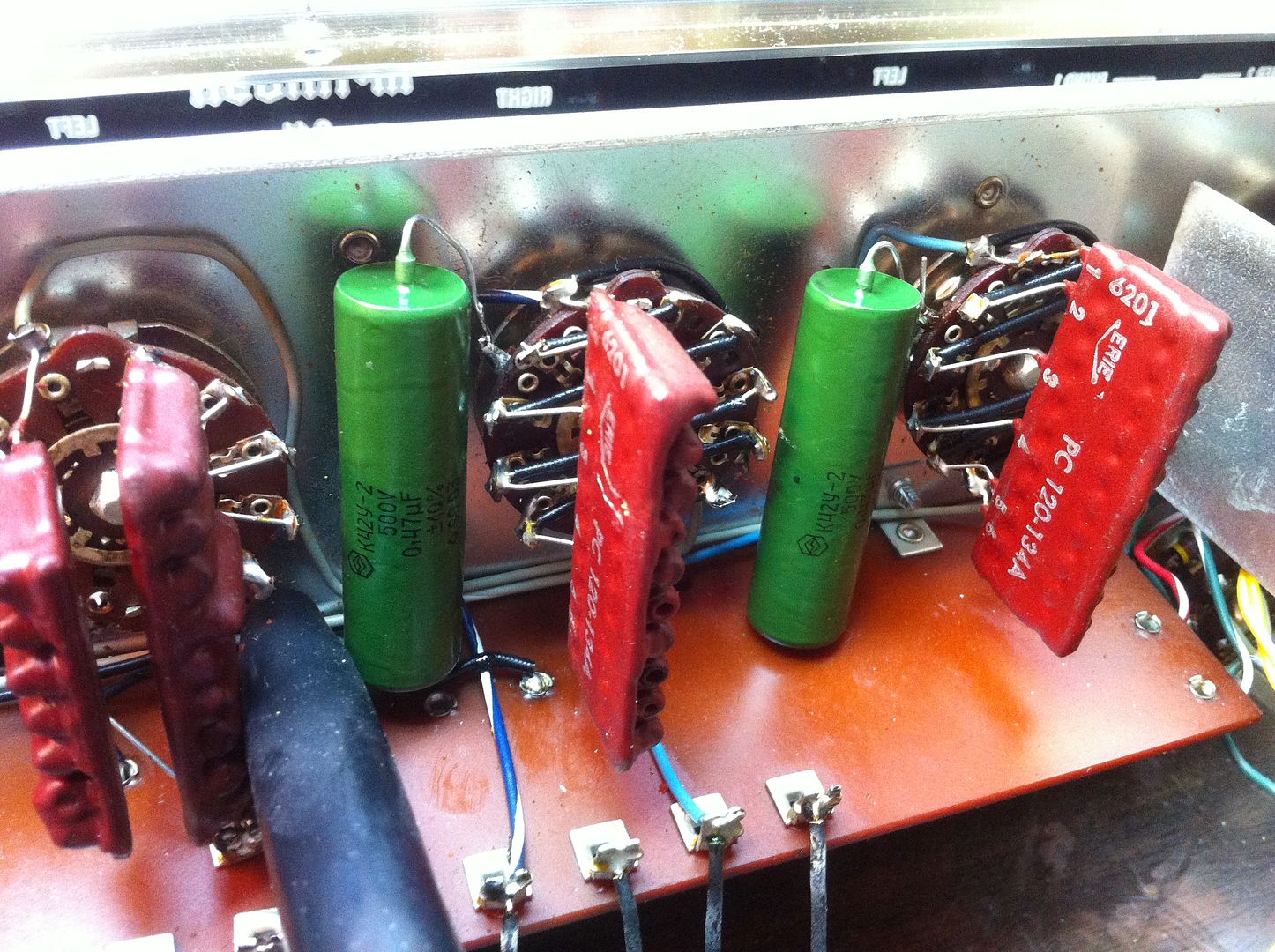I've always had a thing for McIntosh and I've wanted a C22 preamp for some time now. (Hey, who hasn't?  )
)
Much has been ballyhooed about the MX-110 (especially "Z" series) as being the poor-man's C22, but the circuit topography is not at all the same and all the extra tuner circuitry is superfluous to my desires. Besides, I think the real beauty of the MX-110 sound is partly due to the 6D10 compactron that is in the signal path (see Steve Hoffman thread: http://forums.stevehoffman.tv/threa...-surprised-me-today-follow-up-post-61.268103/). This is all fine and good, and the MX-110s I have heard have sounded great, but an MX-110 is not a C22.
However, the C11 is. The C11 went into production in 1961 and in 1963 was given a front-panel upgrade while the rest remained virtually unchanged, and thus the C22 was born. So, last week I brought home a real "poor-man's C22" from a local seller. Save for some missing lettering on the front panel, it is spotlessly clean and included six Telefunken long-plate 12AX7s. (This is not an insignificant detail.)
Tonight I stripped out the original can capacitors and selenium rectifier in preparation of new parts to arrive this week. Once the power supply is rebuilt, I'll give it a listen for comparison and start in on signal-path capacitors for the next step. Craig Otsby of NOSValves has some photos on his website of a C22 he repaired for a customer so I've got a few ideas of what to do next.
Isn't this fun?


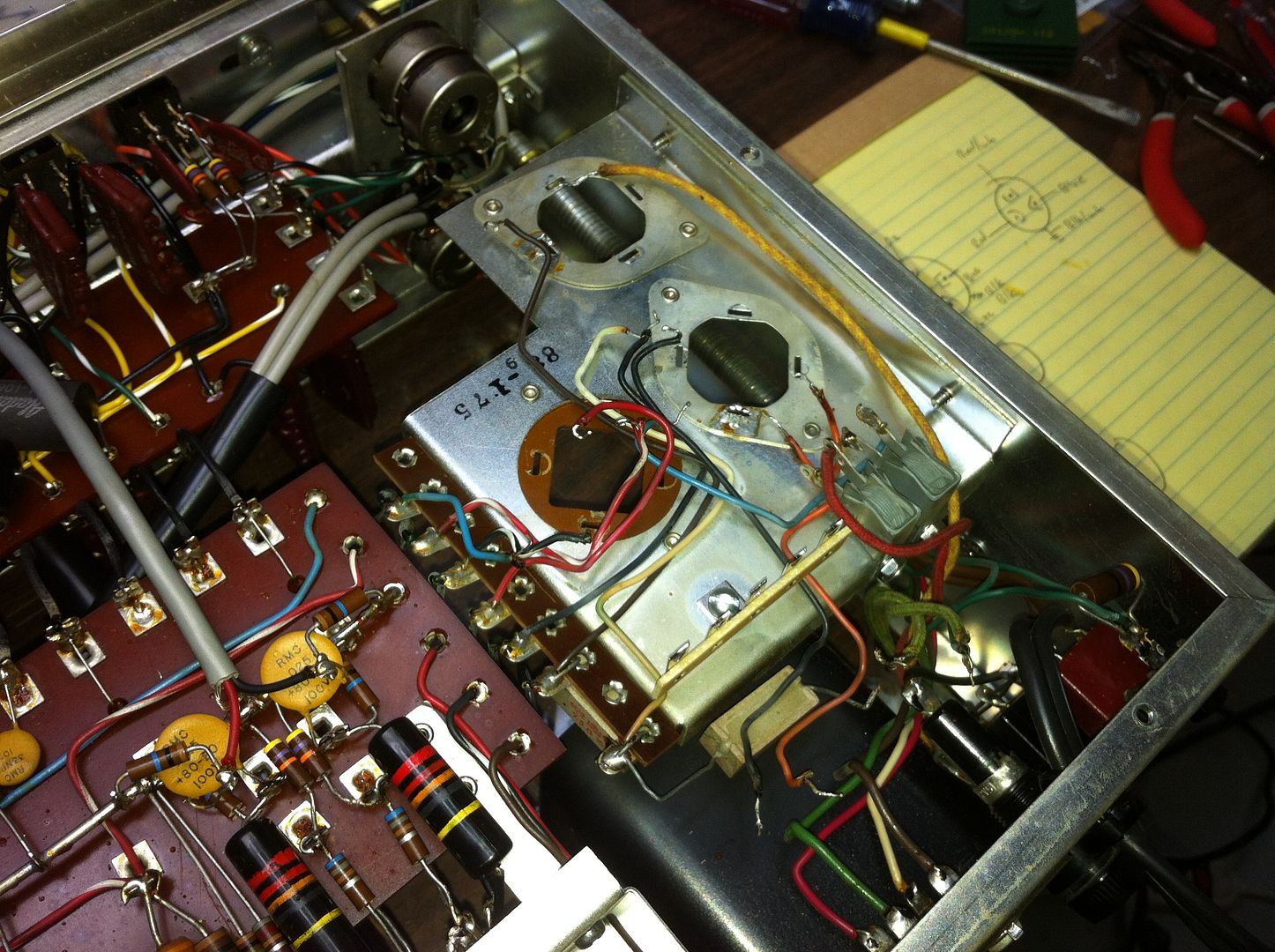
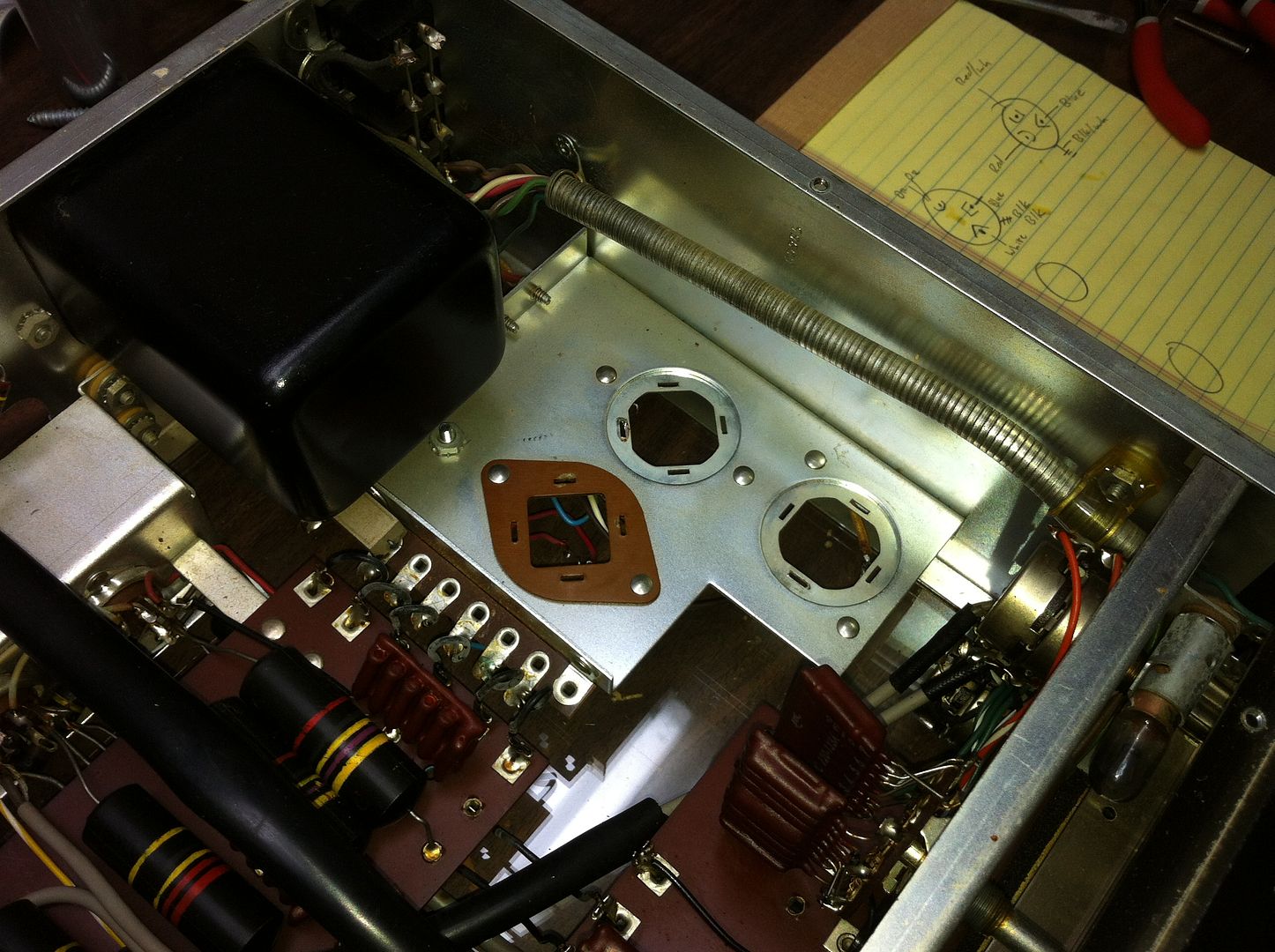
Much has been ballyhooed about the MX-110 (especially "Z" series) as being the poor-man's C22, but the circuit topography is not at all the same and all the extra tuner circuitry is superfluous to my desires. Besides, I think the real beauty of the MX-110 sound is partly due to the 6D10 compactron that is in the signal path (see Steve Hoffman thread: http://forums.stevehoffman.tv/threa...-surprised-me-today-follow-up-post-61.268103/). This is all fine and good, and the MX-110s I have heard have sounded great, but an MX-110 is not a C22.
However, the C11 is. The C11 went into production in 1961 and in 1963 was given a front-panel upgrade while the rest remained virtually unchanged, and thus the C22 was born. So, last week I brought home a real "poor-man's C22" from a local seller. Save for some missing lettering on the front panel, it is spotlessly clean and included six Telefunken long-plate 12AX7s. (This is not an insignificant detail.)
Tonight I stripped out the original can capacitors and selenium rectifier in preparation of new parts to arrive this week. Once the power supply is rebuilt, I'll give it a listen for comparison and start in on signal-path capacitors for the next step. Craig Otsby of NOSValves has some photos on his website of a C22 he repaired for a customer so I've got a few ideas of what to do next.
Isn't this fun?





Last edited by a moderator:



